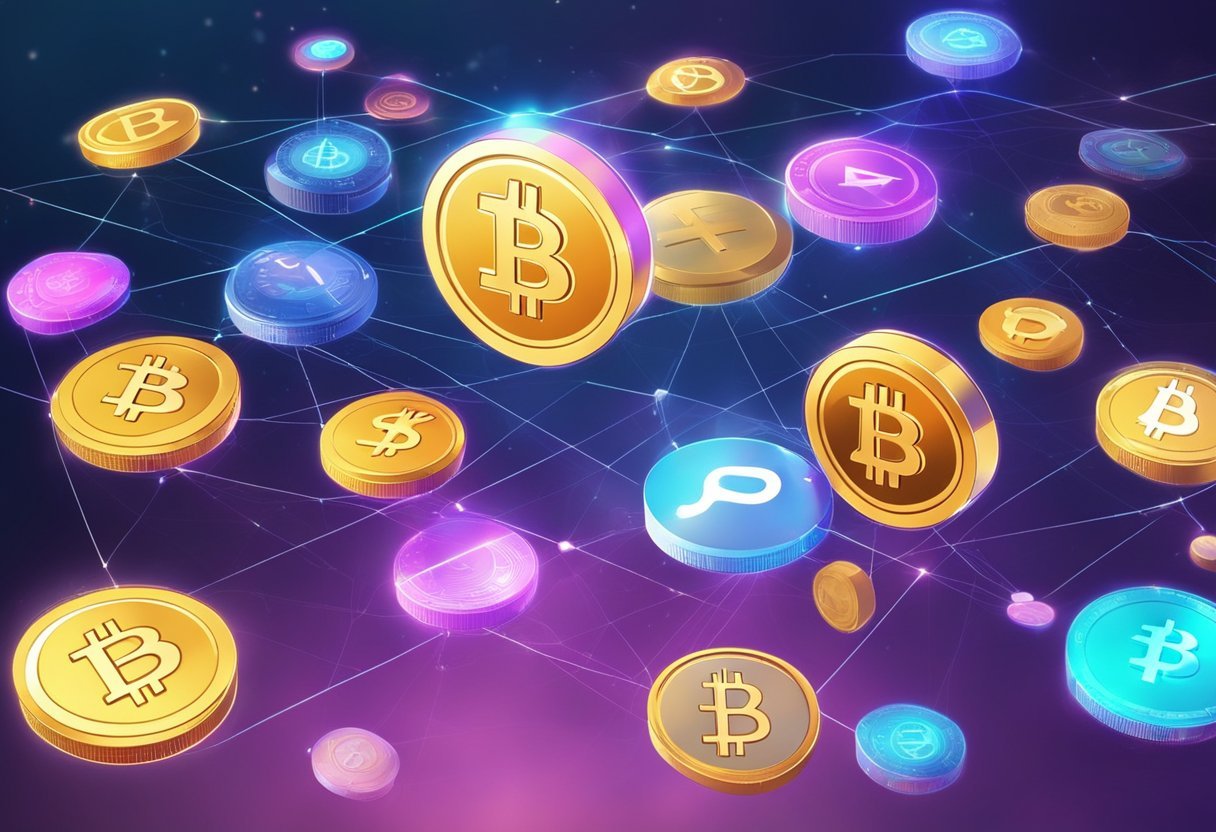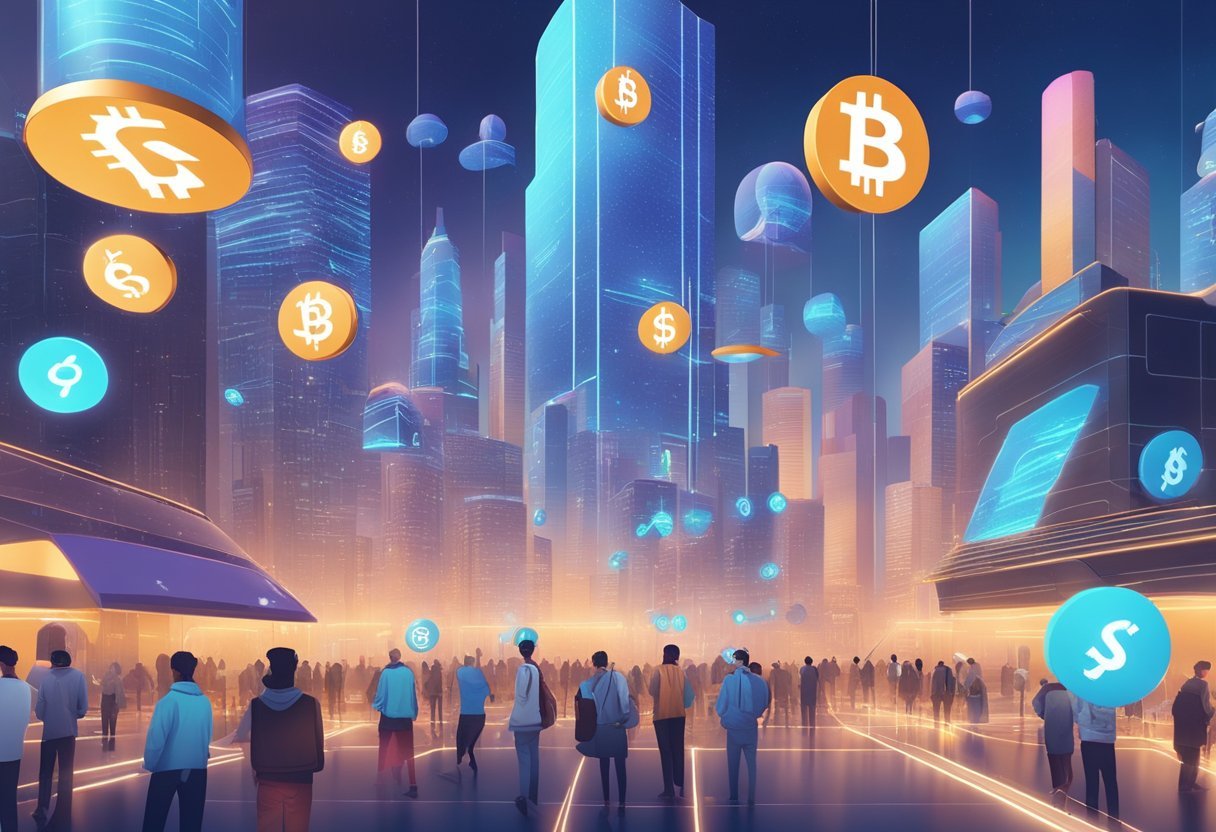The metaverse is a virtual space where users can interact with each other and digital objects in a three-dimensional world. As the metaverse continues to grow in popularity, the way people make payments within it is becoming increasingly important. The metaverse offers new opportunities for commerce, but it also presents new challenges when it comes to security and privacy.
In the metaverse, users can receive payments through a variety of methods, including cryptocurrencies, digital wallets, and other payment systems. The key benefit of using digital currency payments in the metaverse is that they are borderless, allowing users to send and receive payments from anywhere in the world without having to worry about exchange rates or other barriers.
As the metaverse becomes more popular, new payment systems are emerging to meet the needs of users. These systems are designed to be secure and easy to use, with a focus on providing a seamless user experience. However, there are also concerns about the security and privacy of metaverse transactions, and it is important for users to be aware of these risks and take steps to protect themselves.
How do you receive payments in the metaverse?
There are several ways to receive payments in the metaverse. Here are some of the most common methods:
Digital Currencies
One of the most common methods of payment is through blockchain-based digital currencies. These can be used to purchase goods and services from merchants within the metaverse. Bitcoin, Ethereum, and other cryptocurrencies are commonly used for transactions in the metaverse.
Non-Fungible Tokens (NFTs)
NFTs are unique digital assets that can be used to represent ownership of virtual items. They can also be used as a form of payment in the metaverse. For example, a virtual real estate developer might accept NFTs as payment for a plot of land in the metaverse.
Fiat Currencies
Some metaverse platforms allow users to use fiat currencies, such as US dollars or euros, to purchase virtual goods and services. This can be done through a payment gateway that converts the fiat currency into digital currency for use within the metaverse.
In-Game Currency
Many metaverse games have their own in-game currency that can be used to buy virtual items. In some cases, this currency can be exchanged for digital currency or fiat currency. For example, a player might earn in-game currency by completing quests and then exchange it for Bitcoin.
Micropayments
Some metaverse platforms allow for micropayments, which are small payments made for virtual items or services. This can be useful for purchasing low-cost items, such as virtual clothing or accessories.
Overall, there are several ways to receive payments in the metaverse. Digital currencies, NFTs, fiat currencies, in-game currency, and micropayments are all viable options for conducting transactions within the metaverse.
Metaverse Payment Systems

The metaverse is an emerging virtual world that requires a payment system that is secure, fast, and reliable. The following subsections discuss the different payment systems that are currently being used in the metaverse.
Cryptocurrencies and Tokens
Cryptocurrencies and tokens are digital assets that are used as a medium of exchange in the metaverse. They are decentralized, meaning that they are not controlled by any central authority.
The use of cryptocurrencies and tokens in the metaverse provides users with a high level of anonymity and security. However, the volatility of cryptocurrencies and tokens can pose a risk to users.
Digital Wallets and Transactions
Digital wallets are used to store cryptocurrencies, tokens, and other digital assets. They are essential in the metaverse as they provide users with a secure way to store their digital assets. Transactions in the metaverse are conducted using digital wallets. Digital wallets provide users with a fast and reliable way to transfer digital assets.
Integration of Traditional Money
The integration of traditional money in the metaverse is essential for its growth. Fiat currencies such as USD, EUR, and GBP can be used in the metaverse to purchase digital assets. Stablecoins, which are cryptocurrencies that are pegged to the value of traditional currencies, can also be used in the metaverse.
The integration of traditional money in the metaverse provides users with a familiar payment system and reduces the risk of volatility associated with cryptocurrencies and tokens.
In conclusion, the metaverse requires a payment system that is secure, fast, and reliable. Cryptocurrencies and tokens, digital wallets and transactions, and the integration of traditional money are the current payment systems being used in the metaverse.
Each payment system has its advantages and disadvantages, and users should choose the payment system that best suits their needs.
Security and Privacy in Metaverse Transactions

Fraud Prevention and Secure Transactions
As with any online transaction, fraud prevention is a critical component of secure metaverse transactions. Metaverse payment platforms must implement robust security measures to prevent unauthorized access to user data and transactions.
This includes measures such as two-factor authentication, encryption of sensitive data, and real-time monitoring of transactions for suspicious activity. Payment platforms must also ensure that their users’ financial information is kept safe from phishing attacks and other vulnerabilities.
Privacy Concerns and User Data Protection
Privacy is a major concern for users in the metaverse, and payment platforms must take steps to protect user data. Payment platforms must implement strict data protection policies that ensure that user data is kept safe and secure.
This includes measures such as data encryption, anonymization of user data, and regular security audits. Payment platforms must also ensure that user data is not shared with third parties without explicit user consent.
In summary, metaverse payment platforms must implement robust security measures to prevent fraud and protect user data. Payment platforms must also ensure that user data is kept safe from phishing attacks and other vulnerabilities.
By implementing these measures, payment platforms can provide users with a safe and secure environment for conducting transactions in the metaverse.
Commercial Activities and User Experience
Shopping and Ecommerce in the Metaverse
As the metaverse continues to grow, it is becoming clear that commerce and shopping will play a significant role in its development. The metaverse is expected to represent an $8-13 trillion market opportunity by 2030 with as many as 5 billion users.
Major brands are already jumping in as fast as they can, offering promotions and visual showrooms. In the metaverse, commerce is limited to one platform. For instance, a digital version of a Gucci bag was sold on the Roblox platform for 350,000 Robux, the equivalent of $4,115. The owner can’t use, sell, or trade it outside the platform.
Enhancing User Experience through Seamless Payments
One of the key factors that will determine the success of commerce in the metaverse is the user experience. Metaverse platforms should focus on enhancing user experience and minimizing entry barriers to increase uptake. The development of seamless payment systems that allow frictionless transactions will be crucial in achieving this goal.
Interactivity, user agency, interoperability across platforms and devices, the ability for thousands of people to interact simultaneously, and use cases spanning activities well beyond gaming are some of the factors that will determine the pace of development of the metaverse.

Frequently Asked Questions
How can users securely complete transactions within the metaverse?
Users can securely complete transactions within the metaverse by using secure payment gateways and digital wallets. These payment gateways and digital wallets use advanced encryption and security protocols to ensure that users’ financial information is protected. Additionally, users can use two-factor authentication and other security measures to further enhance the security of their transactions.
What digital currencies are accepted for metaverse transactions?
Metaverse transactions can be completed using a variety of digital currencies, including Bitcoin, Ethereum, and other cryptocurrencies. Additionally, some metaverse platforms may accept other digital currencies or even traditional fiat currencies.
Are there any standardized protocols for payment processing in the metaverse?
Currently, there are no standardized protocols for payment processing in the metaverse. However, there are a number of emerging standards and best practices that are being developed by industry groups and other organizations.
How do payment gateways integrate with metaverse platforms?
Payment gateways can integrate with metaverse platforms through the use of APIs and other integration tools. These tools allow payment gateways to connect directly to metaverse platforms, enabling seamless payment processing for users.
What measures are in place to prevent fraud in metaverse payments?
Metaverse payment systems typically use advanced fraud detection and prevention tools to ensure that transactions are legitimate. These tools may include machine learning algorithms, identity verification systems, and other security measures.
Can traditional banking methods be used to make purchases in the metaverse?
In some cases, traditional banking methods may be used to make purchases in the metaverse. For example, users may be able to link their bank accounts to their digital wallets or use their credit or debit cards to make purchases.
How are payments made in the metaverse?
Payments in the metaverse are typically made using digital currencies or other digital payment methods. Users can send and receive payments directly within the metaverse, making it easy to complete transactions with other users.
What is the payment processing in the metaverse?
Payment processing in the metaverse typically involves the use of digital wallets, payment gateways, and other payment processing tools. These tools enable users to securely send and receive payments within the metaverse.
Are transactions possible in the metaverse?
Yes, transactions are possible in the metaverse. Users can buy and sell digital goods and services, as well as exchange digital currencies and other assets.
How metaverse can be used in banking?
Metaverse technology has the potential to revolutionize the banking industry by enabling new forms of digital banking and financial services. For example, banks could use metaverse platforms to offer virtual banking services, such as virtual ATMs and mobile banking apps. Additionally, metaverse technology could be used to create new forms of digital currency and other financial products.




